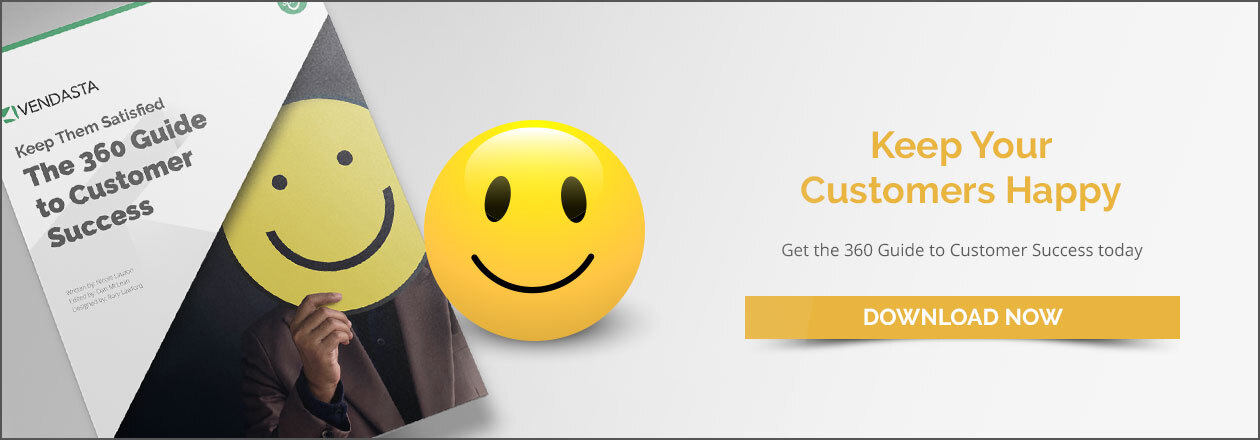Customer Experience Management: Tips for Creating a Customer Obsessed Culture in Your Organization
 By Nicole Lauzon
By Nicole Lauzon Customer Experience Management (CEM) is a multi-tiered concept that begins with a consumer’s very first interaction with your brand. That might be through an advertisement seen about your offerings on social media, an interview or presentation given by one of your brand ambassadors for an industry publication, or even a word-of-mouth recommendation from an associate.
That first impression sets the tone for a relationship that follows and evolves over time. It’s the reason that alignment within your organization is critical. Not only is it important to meet every expectation created through that first interaction, brands with a true customer experience culture strive to exceed those expectations through their sales, onboarding, support, training, and success structures.
In an interview for the Customer Success Podcast, Global Senior Director of Client Experience at ADP Nicolle Paradise says, “The competitive battleground is about how successful customers are.
“They don’t care about your features, they don’t care about your product, or your roadmap. They care about how effortless their experience is and how quickly they can get to efficiency for their business. Putting the client at the center of that focus is what all businesses need to do.”
It’s with that same attitude that we explore the intricacies of the customer experience and the elements, tools, and techniques that take customer experience from good to great, helping propel organizations into a viral growth loop of happy customers adopting, finding value, and becoming ambassadors for your brand.
The Ideal Customer Profile
The ideal customer profile (ICP) is a descriptive characterization of the best-fit client for your product. It defines who will potentially get the greatest benefit from using your product while bringing the most value to your business. Looking at your ICP through the lens of the Pareto principle that 20 percent of your customers typically account for 80 percent of your revenue.
According to customer success growth expert Lincoln Murphy, the ICP should dictate everything from the features and functionality of your product - or what should make up your service offering - to the words you use and the emotion you tap into with your marketing.
“I think people forget that you actually get to choose your customers. You get to choose who you want to do business with. So creating an ideal customer profile isn’t limiting…it’s empowering!” Murphy says.
Developing your ICPs begin with determining the product-market fit. You need to ensure at the out-set that your product fully meets market expectations as well as those of the clients you’re bringing onboard. Building a product that is intentionally designed with the user in mind eliminates a huge chunk of work down the line involving painful support processes and training.
“All too often, marketers and salespeople think ‘a customer is a customer and any sale is a good sale.’ It’s time to break free from that mindset. In reality, there is a stark difference between an ideal customer and less-than-ideal customers,” says Vendasta Chief Customer Officer George Leith.
You can create your ICP by:
- Brainstorming specific problems you are solving for your customer
- Reverse engineer your areas of success by looking for other customers who may fit
- Survey existing clients to better define your value proposition
- Dig into website metrics to help pinpoint the target audience
- Analyze social-media content for areas of high engagement
- Keep tabs on your competitors and the lead magnets they’re deploying
Resource Recommendation: What is an Ideal Customer Profile and 6 Ways to Identify ICPs by Vendasta Content Marketing Specialist Anusuya Datta.
Integrated Sales and Marketing
Aligning your sales and marketing efforts with what you have going on in customer support is critical. By understanding the desired outcome for the customer, sales can ensure it isn’t pitching something that can’t be delivered. Sales and marketing should also have deep knowledge of the ICP, to mitigate the risk of acquiring bad-fit customers who might be dumped on the doorsteps of customer support.
According to Alka Tandan, a specialist in customer-centric growth, organizations have made strides in improving their onboarding processes in recent years, bringing to the surface the disconnect between sales and the rest of the business.
“If you set an expectation that can't be realized you're inevitably going to have problems with your customers,” Tandan says.
“For sales, it's also about maintaining information in a strategic way and pulling it through to support the customer as they continue along their journey with your product.”
As you grow your business it’s important to put the tools in place that enable your teams at every level to be successful.
“What ends up happening is customer experience or customer support becomes specialized as organizations grow. Effort needs to be made to ensure that customer culture doesn’t remain as a specialized or a siloed division. That information needs to be infused throughout - from product marketing and sales, to support and growth,” Tandan says.
Customer Experience Culture
Customer-centric organizations adopt deeply ingrained principles that are celebrated and injected into every role within the business - from senior leadership, right down to front line specialists.
“Put yourself in your customer's shoes. Get an end-to-end understanding of what it's like to work with your team or use your product. After going through the motions, you'll understand what parts of the experience weren't as easy and delightful as you imagined. This is your starting point,” says Vendasta Director of Partner Success, Naresh LaBar.
When pinning down prime examples of this customer-obsessed culture, Amazon rises to the forefront with Customer Obsession highlighted as its top leadership principle:
“Leaders start with the customer and work backwards. They work vigorously to earn and keep customer trust. Although leaders pay attention to competitors, they obsess over customers.”
Recommended Resource: Working Backwards: Insights, Stories, and Secrets from Inside Amazon by Colin Bryar and Bill Carr.
Tips for Prioritizing Customer Obsession in Your Organization:
- Make company values customer-oriented and actionable
- Hire team members who contribute to a positive customer culture
- Focus on customer-centric themes in staff training and onboarding
- Demand accountability on metrics like customer retention, time to value, and satisfaction ratings
Tools and Techniques
A snapshot of the top players in customer experience management:
| Solution | Pros | Cons |
| Zendesk: A leader in ticketing, messaging, live chat and help centre functions |
✔ Instant features and topic suggestions offer customers a self-service smart knowledge base ✔ The custom fields and tags are used to classify tickets for easier tracking and archiving ✔ Communication with people across the organization on support issues through private notes |
✘ There is no option to export data directly into a CSV file ✘ Cost is determined per agent so an additional agent means additional cost |
| Qualtrics XM: The listening engine with predictive intelligence and analytics to gain a holistic understanding of the customers’ experience. |
✔ Large number of survey question types available ✔ Advanced survey logic to handle complicated design asks ✔ Built-in reporting tool to help internal teams stay up to date on responses as they come in |
✘ User interface can be complicated, and takes some initial adjustment ✘ Lacks easy ‘undo’ function when editing surveys, instead requiring users to lean on backup versions |
| Medallia: Capture and analyze signals, predict behavior and create experiences that retain customers. |
✔ Easy to use interface ✔ Robust reporting with data represented in a way that’s easy to consume ✔Many options for how you want to compare data |
✘ Requires technical knowledge to make changes ✘ May need to partner with a 3rd party to manage the solution ✘ Add on applications can be pricey |
| Vendasta: Market, sell, bill and fulfill to clients all from one connected platform. |
✔ Hot Lead notifications tells users when prospects are ready to buy, and recommends appropriate products ✔ Includes meeting scheduling, email marketing and order processing, without the need for complicated integrations |
✘ Robust platform requires some advanced training |
Wrapping up
By identifying who is the best fit for your offering, ensuring there is buy-in from all levels of your organization, and putting a customer-obsessed mindset at the forefront of your guiding principles, you’re setting the stage for achieving best-in-class customer satisfaction.
To learn more about what your customers need before they do, check out Vendasta’s easy-to-use yet powerful customer relationship management (CRM) tool that gives your sales team the tools they need to, pitch the right products, contact prospects at the right time, and put an end to uncertain cold calling.
The Vendasta customer relationship management system uses artificial intelligence to determine when your prospects are ready to buy, and exactly what products they need to succeed. It’s included in Vendasta’s end-to-end commerce platform, saving both time and money by having your entire team working out of one connected online space. With robust pipeline management and prospect analysis, Vendasta’s CRM is perfect for teams of all shapes and sizes. Find out more about Vendasta’s Sales & Success Center CRM and book a demo today.


